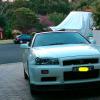PRP trigger, Haltech Ecu, Base timing?
Announcements
-
Similar Content
-
Latest Posts
-
Thanks Duncan, I don't have a GTR these days mate. Gone soft..
-
Yeah. air pressure leakdown test is where I would be headed next here, using one's ears to determine whether it's the valves or bores/rings leaking...
-
More likely you didn't bed the rings in correctly and have glazed the bores. Running with misfires on a fresh build is somewhat of a no-no. Surely no-one "smoke tests" the combustion chamber? That's what a leakdown test is for. Smoke testing is, um, a bit of a wank at best, and only really useful for external pipework.
-
Well, obviously that kit is not a relocation kit or anything other than just the original isolators and the like. I would suggest that it should be a matter of just bending up some flat bar to build a mount over the top of some other diff, with the flat bar held to the back of the diff by the rear hat bolts. A little welding, a little thinking about how to secure the front of this structure, maybe some different hoses in case you can't get it in just the right place.
-
Pay diff/trans workshop to do this. Nope. Z32 turbo ran R230 with 6 bolt GTR style axles. All other Z32 were R200. Basically same same as other R32 stuff. All were a viscous waste of space.
-


Recommended Posts
Create an account or sign in to comment
You need to be a member in order to leave a comment
Create an account
Sign up for a new account in our community. It's easy!
Register a new accountSign in
Already have an account? Sign in here.
Sign In Now